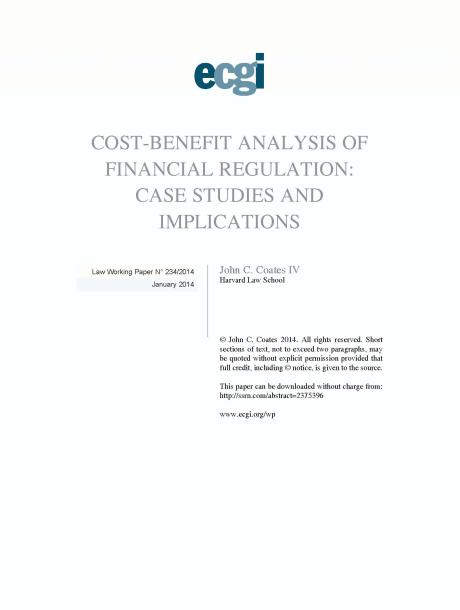
Cost-Benefit Analysis of Financial Regulation: Case Studies and Implications
Abstract
Some members of Congress, the D.C. Circuit, and legal academia are promoting
a particular, abstract form of cost-benefit analysis for financial regulation: judicially
enforced quantification. How would CBA work in practice, if applied to specific, important, representative rules, and what is the alternative? Detailed case studies of six rules ? (1) disclosure rules under Sarbanes-Oxley Section 404, (2) the SEC?s mutual fund governance reforms, (3) Basel III?s heightened capital requirements for banks, (4) the Volcker Rule, (5) the SEC?s cross-border swap proposals and (6) the FSA?s mortgage reforms ? finds that precise, reliable, quantified CBA remains unfeasible. Quantified CBA of such rules can be no more than ?guesstimated,? as it entails (a) causal inferences that are unreliable under standard regulatory conditions; (b) using problematic data, and/or (c) the same contestable, assumption-sensitive macroeconomic and/or political modelling used to make monetary policy, which even CBA advocates would exempt from CBA law. Expert judgment remains an inevitable part even of what advocates label ?gold-standard? quantified CBA, because finance is central to the economy, is social and political, and is non-stationary. Judicial review of quantified CBA can be expected to do more to
camouflage discretionary choices than to discipline agencies or promote democracy.






